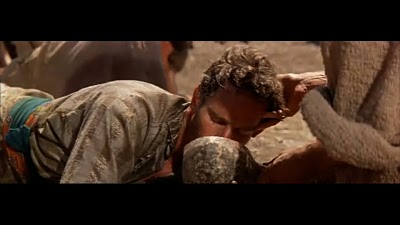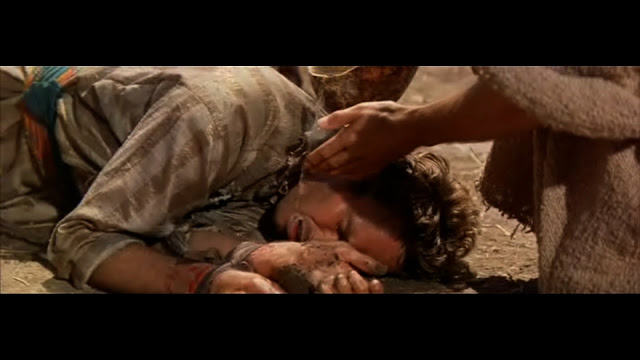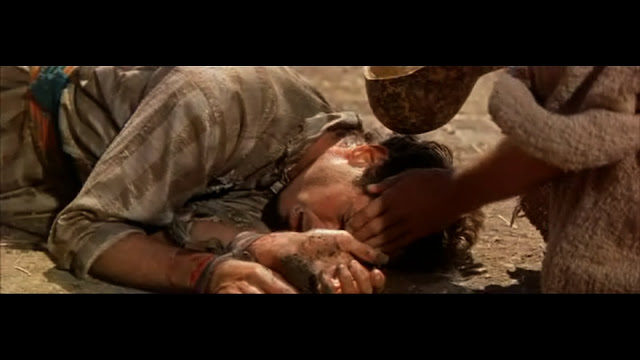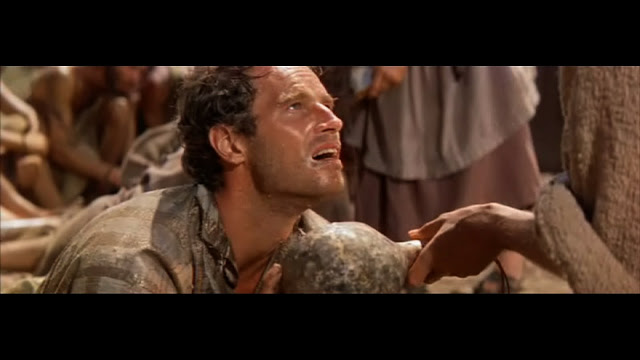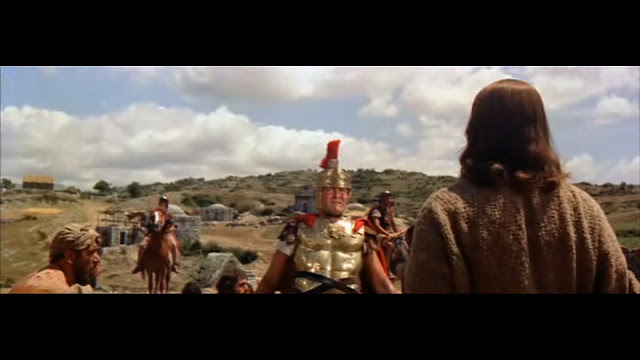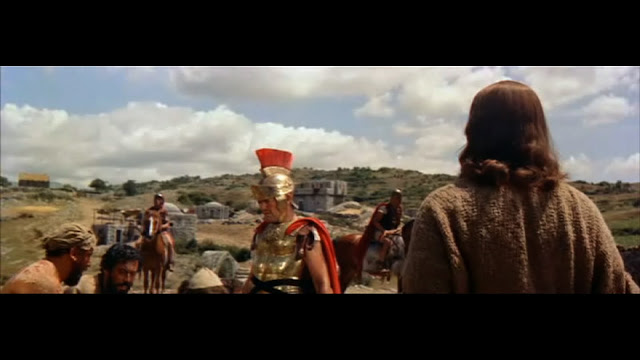Ben Hur and Spartacus
Slavery has been the subject to cinematic focus since the early days of cinema. In 1913 the Italian Ernesto Pasquali characterised Spartacus with heroic qualities as he inspired his fellow slaves to revolt . In 1915 DW Griffith’s The Birth of a Nation, with its dynamic quality of cinematic and cultural force, appeared at a crucial moment of the so-called Reconstruction protest in the history of the development of American institutions, and is one of the few examples of the development of modern constitutionalism being represented in visual culture providing a focus on the problems of race crucial to the Constitution as it explored issues of American citizenship and the segregatory legislation supporting the concept of the English colonists who felt compelled to create a cinematic narrative of racial inferiority to explain their enslavement of black African American labourers.
In the 1950s historical Roman epic films appropriated the ideological thematic themes of Christian versus paganism and totalitarianism versus freedom. However, whether the themes have a secular or religious (Judaic or Christian) backcloth, both emphasise individual freedom. The films of the 1950s and early 1960s express post Second World War political and social resonance concerns of military and political tyranny .
Spartacus (1960) is concerned with the corrupting influence of power in ancient Roman’s political factions. It is the sober narrative of an appealing and charismatic hero’s tragic journey. It is a breathtaking cinematic spectacle directed by Stanley Kubrick and produced by and starring Kirk Douglas as Spartacus the rebellious slave. The film was hailed as “the thinking man’s epic” (Newsweek, 1960).It was a huge box office success and won Academy Awards for the Best Supporting Actor (Peter Ustinov), colour cinematography, art direction and colour costume design and won a Golden Globe as best picture. It is a secular narrative based on the historical novel of Howard Fast’s life of Spartacus and the Third Servile War, and is an anti-Mc Carthyite film with political resonance for the modern day. The thematic ideological message of totalitarianism versus freedom was the result of Howard Fast’s experience as a target of the anti-Communist campaign in Hollywood. Spartacus is characterised as the leader of the slave revolt 73-71 BC which almost brought down the Roman Empire. Spartacus became the hero of the organised left in the Soviet Union and Europe and Karl Marx call him “the most splendid fellow in the whole ancient history,” while the slain Spartacus became part of the mythology and martyrology of the soviet union.
The central theme of Spartacus is the common narrative formula of epic Roman films of the subjection of oppressed chattel slaves, their voices of resistance and their uprising in pursuance of their innate longing for freedom and equality against the despotism of Rome and its decadent rulers in the dying days of the Republic. Its eternal fight against oppression has resonance for American audiences in the Cold War narrative of freedom versus tyranny, the struggle between totalitarianism and the free world (Murphy 2004: 10). Spartacus came to be seen as acutely relevant to the consolidation of class struggle. Spartacus is an appealing hero to post-war American audiences as its narrative traces the tragic but heroic journey against the background of the spectacle of Rome, the corrupt oppressor, and its display of power, decadence and cruelty. American parallels between twentieth-century America and Roman civilisation .
The nineteenth century Italian novelist Raffaello Giovagnoli saw Spartacus as the forerunner of Garibaldi in his epic revolutionary novel Spartaco, which provided the basis for the first cinematic portrayals and characterisation to Spartacus produced during the First World War in Italy .
When Spartacus dies in battle his body cannot be recovered in the carnage of the battlefield hence thematically this renders him as a symbolic impetus “larger than any individual leader” (Journal of Film and Video 2004: 11)Spartacus is connected with heroes of the left such as Joe Hill though shot down can be found “were workingmen defend their rights.” he can also be a seen affiliated to Tom Joad the hero fugitive of The Grapes of Wrath who states when bidding his mother farewell “I’ll be everywhere-wherever you look. Wherever they’s a fight so hungry people can eat, I’ll be there. Wherever they’s a cop beatin’ up a guy, I’ll be there” (Steinbeck 572). When Spartacus is forced by the evil Licinius Crassus (Laurence Olivier), the inhuman and evil Roman general, to kill Antoninus, to spare him from crucifixion, Spartacus tells Crassus, “He will come back and he will be millions.”
As Spartacus states to Antoninus explaining the revolution, “When just one man says ‘No, I won’t,’ Rome begins to fear. And we were tens of thousands who said no-that was the wonder of it!” The film is abouta revolutionary hero.
The film Spartacus opens with a voiceover establishing the narration: “In the last century before the birth of the new faith called Christianity, which was destined to overthrow the pagan tyranny of Rome, and bring about a new society, the Roman Republic stood at the very centre of the civilised world…yet even at the zenith of her pride and power, the Republic lay fatally stricken with the disease called slavery. The age of the dictator was at hand, waiting in the shadows for the event to bring it forth.”
The film opens with Spartacus labouring in the salt mines of the Roman province of Libya, “dreaming the death of slavery,” thus anticipating a “new faith and the presumably democratic society it will engender.” The visual exposition of the excruciating suffering of the slaves in Death Valley, overseered by Roman guards and slave drivers, representing the formidable tyranny of the Roman Empire, belies the establishing narration about civilisation. This scene is resonance of the cinematic representation of the environmental landscape of slavery of the protagonist in William Wyler’s Ben Hur (1959), who after his unjust arrest and enslavement, is seen being driven, under the Roman whip, shackled and dehydrated, across the steering hot desert of barren landscape, under the scorching sun of a cloudless expansive sky to the slave galleys at Tyrus. The mounted Roman soldiers, representing the might of Rome, place their priority of animals over slaves, as seen in the centurions command, that the horses being watered first at the well in Bethlehem. In Ben Hur a collapsed slave is ruthlessly tossed into the bowels of the desert sandhill, while in Spartacus,Spartacus is ruthlessly beaten for his act of humanity in helping a collapsed slave and barraged by the Roman soldiers curse, “Get up Spartacus you brazen dog!” as he is kicked into the ground, his integral humanity and human gesture disregarded.
Historically the Spartacus slave rebellion fails, not ameliorating the situation of slaves in the Roman times and the filmatic necessity of rendering a hopeful message. The gladiators having escaped from Batiatus’s gladiators’ school, however, instead of dispersing into the countryside more imperceptibly to live as free men, stayed together, elected Spartacus as their leader of their slave resistance and set up camp on Mount Vesuvius. The community of rebel gladiators and slaves was organised alone democratic lines, each individual assigned and occupation to suit his talents. These idyllic interludes of the camp domesticated and humanised Spartacus and his relationship with Varinia (Jean Simmons), a slave girl from Britannia, develops and her pregnancy, their embryonic child, provides the symbolism of hope for the future.
This iconic resonance of the idyll is further illustrated by the visual differentiation between the Romans and in colour the senators wear bordered white togas which contrast with the brown wool cloaks single huge tunics and rough furs of the slaves of Spartacus’s army walking through the idyll of the rustic snowy or leafy landscape .
Despite settling for, awhile within the boundaries of Italy itself Spartacus’s ambition was to lead his army of freed slaves out of Italy and to return to their places of origin.Spartacus becomes a proto-Judeo- Christian narrative and Douglas consciously foregrounds the Zionist elements of Fast’s novel. He states in his autobiography Ragman’s Son, “I come from a race of slaves. That would have been my family, me.” Kirk Douglas saw Spartacus as an opportunity of the Zionist statement similar to that in Otto Preminger’s Exodus (1960), with Spartacus a Moses/Christ figure leading his people to the Promised Land. Though the narrative has Old Testament resonance and symbolism, the crucifixion at the end of the film invokes Christian parallels .
In his final address to inhabitants of his settlement Spartacus says “I’d rather be a freeman among brothers, facing a long march and a hard fight, than to be the richest citizen of Rome, fat with food he didn’t work for and surrounded by slaves…As long as we live, we must stay true to ourselves. I do know that we’re brothers, and I know that we’re free.” The slave army in Spartacus is a singular company of blood and nations but united first in their bondage and now in their freedom.
Spartacus stops an organised fight which the freed slaves were enforcing onto slave-owners seized along their march. Unlike the Romans with their disregard for human dignity or sanctity of human life, Spartacus states “I swore that if I ever got out of the [gladiator school] I’d die before I’d watch two men fight to the death again…..What are we becoming? Romans?” As Spartacus declared to Batiatus while still enslaved, “I am not an animal.”
The Spartacus film states nothing of the previous slave revolts which historically might have inspired the gladiators, but rather gives only the hopes and fears that the name of Sparta will call forth in the future .
Spartacus says “I imagine the God of slaves…and I pray…for a son who will be born free.” Roman law did not give slaves the right to marry and gave the master rights of ownership over the children of slaves. It is one of the visual representations of slave resistance in Spartacus to see the presence of children within the encampment snuggling closely within their parents’ embrace. It is the symbol of the universality of the bonds of family outside the bonds of slavery. When Spartacus is paired with Antoninus by Crassusto fight to the death and Spartacus swiftly kills him to spare him from crucifixion Antoninus states “I love you Spartacus as I love my own father” an anguished Spartacus responds “I love you, like my son are never see.” Though the slave resistance fails, the survival of Spartacus’s son offers a symbol of resistance and hope for the future. Yet Spartacus does see his son for Varinia, with the help of Gracchus and Batiatus escapes from Crassus’s villa and on the way out of Rome comes before her husband’s cross. In the iconic posture of Madonna and child, and she holds up their newborn child, vowing to the dying Spartacus that his son will grow up as a free person, promising to tell him “Who his father was, and what he dreamed of.” This indicates a victory for Spartacus, through these words, the last he hears as he slumps dead on the cross which was unable to defeat his spirit. This is resonant of the opening titles which depict pictures of clenched fists, hands, and Roman faces visually and symbolically dissipating, cracking before our eyes.
Spartacus and Draba
Woody Strode, former Rams football star, had made a successful transition to Hollywood and is introduced as the monumental and noble black Ethiopian Draba. During the same year as Spartacus was released,1960, Strode appeared in John Ford’s reform western, Sergeant Rutledge, where he portrayed an African American soldier unjustly indicted for the rape and murder of a white girl. As Bogle (2001: 185, 186) states, Sergeant Rutledge “marked an important step in the evolution of racial consciousness.” This encroached upon the traditions of the early days of film productions where African American actors had been rigidly consigned to mythical characterisation.
Strode, with his magnificent physique, plays the muscle bulging bare-chested fellow gladiator of Spartacus. Draba is the only black gladiator in the gladiatorial school and initially states that it is not wise to have friends amongst the fellow gladiators, “If we’re ever matched in the arena together, I’ll have to kill you.” This statement prepares for the inevitable when Spartacus and Draba are matched in a private combat and compelled to fight to the death for the entertainment of Crassus and his decadent guests, comfortably ensconced well above the arena of contest and danger, establishing a “divisive social space” between the physical dimensions of high and low and the social dimensions between free and slave (Davies 2000: 36). At the end of their contest Draba is holding his trident at his Spartacus throat who we see in close-up bracing himself his death while the aristocratic heartless Romans screech tauntingly “Kill him! Kill him, you imbecile!” The reverse angle close-ups on Draba’s face reveal to us his innate nobility: he is thinking of the inhumanity of what he has been forced into doing.
He refuses to kill his opponent, instead throwing his trident in fury at the heartless spectators in their elevated box and leaps to attack the Romans, but is speared by a Roman guard in his back and the kill is completed by Crassus, who slices the sinews between drapers his neck with a dagger. When Draba suddenly attacks the Romans, the greatest surprise is his jump upwards, a difficult leap, that connects the two worlds through violence. Draba’s corpse is hung upside down by the ankles like a carcass as an explicit warning to other slaves against rebellion: “He’ll hang there till he rots.” A Draba’s sacrificial death renders the film a timely civil rights dimension, as he sacrifices his life rather than to kill. Draba’s death and dangling corpse condense the shameful history of slavery, lynching, and racial oppression in the United States and legitimates Spartacus’s revolt in terms of contemporary civil rights efforts. During their enforced slavery, the African-Americans had been excluded from cultural and political equality, while after Emancipation they were excluded politically and culturally from civil society by lynching, rioting, intimidation and the Ku Klux Klan .
Despite Draba’s refusal of friendship in the dehumanising arena of slavery, he displays greater nobility of spirit than any other gladiaton.He lost his life but gained his dignity. The impact of Draba sacrifice has provided the impetus and the spark within Spartacus for the gladiators’ revolt.
The relationship between the Spartacus and Draber compares with the relationship in Gladiator of that between Maximus and Juba, however the latter is portrayed unproblematically compared with the tension in Kubrick’s cinematic theme between Draber and Spartacus. In Gladiator there is a theme of racism when Commodus declares with the intent resonance of Hitler’s megalomania Nazi eugenics that he intends to marry his sister, Lucilla, to produce an heir of pure blood so that Commodus and his progeny will rule for a thousand years. However this is an isolated case and a moral aberration.
Fast makes the Roman aristocrats and nobles are aimless, decadent, effete and vigorously impaired. Licinius Crassus becomes obsessed with Spartacus, the annoyance turns to threat turned to unattainable myth “I ‘m not after glory, I’m after Spartacus and I mean to have him” he states after the final battle. His homosexual attempt to possess Antoninus (Tony Curtis) the young Sicilian slave, was thwarted when Antoninus joins Spartacus “No man can withstand Rome. No nation. How much less…a boy?” Likewise his attempt to possess Spartacus’ woman, Varinia, failed, hence Crassus the Roman embodiment of patrician power was twice emasculating.
When Crassus tries to identify Spartacus he has met with solidarity with the mass declaration of “I am Spartacus.” Even Batiatus refuses to betray him. This is clearly an attack on McCarthyism. During the McCarthy hearings persecuted Americans in the late 1940s and early 1950s looks to Spartacus as a moral and political symbol of justified defiance of governmental repressive ,authority .Kirk Douglas even took this defiance a step further in his determination to break the blacklist by giving Dalton Trumbo full screenwriting credit which, combined with Trumbo crediting of the scripting of Exodus by Otto Preminger, he succeeded in doing. Trumbo was a victim of the blacklist because of his defiance of the House of Un-American Activities Committee because of his refusing to testify. Trumbo delivered a script of great wit based on Howard Fast’s novel Spartacus (1951).Trumbo sought to identify Spartacus’s struggles with the contemporary resonance is of American politics of the 1950s.
Howard Fast the author of the novel Spartacus (1951) upon which the Kubrick film is based was a Communist based on the Jeffersonians democracy and not the orthodox Marxist-Leninist.
Fast was unofficially blacklisted. He had previously honoured that heroism of the oppressed of American historical mythology from novels such as The Proud and the Free, Freedom Road and Tom Paine. Despite his status as a best-selling author, no commercial publishing company would take a book by Fast, due to the negative influence of J. Edgar Hoover who was obliged to publish Spartacus independently. The novel became an immediate success. Despite its vast American modified left-wing perspective influences which enlighten Spartacus as a “counter-hegemonic discourse of the 1950s.”Fast (1990: 294) claims that reading Spartacus “became an act of defiance by people who live the climate of the times.” As Murphy (2004: 11) recognises the vast American modified left-wing perspective influences enlighten Spartacus as a “counter-hegemonic discourse of the 1950s.”Fast had served on the board of the Joint Anti Fascist Refugee Committee which raise funds for Spanish refugees and was amongst the eleven, a members of the committee found guilty of contempt of Congress for refusing to open their books to the HUAC.
In Spartacus Alex North’s music is unyielding, heavy on woodwind and brass, and even in the love scene in the cell oboe and coranglais were used rather than string instruments.
In Ben Hur Miklos Rozsa’s musical score and authenticity is an integral part of the film, using romantic, oriental and contemporary ecclesiastical ambience modes to recreate the fragrant melodies of the ancient extant music of the Greco- Romans, thus creating the resonance and atmosphere which seamlessly binds scenes , unifies sequences, support the action and emphasises the emotions of the protagonists.
In Ben Hur Miklos Rozsa’s musical score and authenticity is an integral part of the film, using romantic, oriental and contemporary ecclesiastical ambience modes to recreate the fragrant melodies of the ancient extant music of the Greco- Romans, thus creating the resonance and atmosphere which seamlessly binds scenes , unifies sequences, support the action and emphasises the emotions of the protagonists.
Ben Hur was concerned with contradictory and complex discourses of imperialism and notions of new American imperialism had spiritual resonances. it told the story of the fight of freedom against oppresson, an oppression of Roman tyranny.
Unlike Spartacus, Judah Ben Hur (Charlton Heston) begins the film’s narrative of Ben Hur as a wealthy Jewish Prince, the head of Jerusalem’s most noble families, while Spartacus was the son of the slave and born into slavery, Ben Hur experiences a carefree youth which is cinematically enhanced by early scenes of comradeship ,where the problems of nationality were in material.His slavery is instigated when he is arrested after a tile is accidentally dislodged from the roof of his palace striking the Governor during his ceremonial arrival. Ben Hur is unfairly discredit, and betrayed by Messala (Stephen Boyd) a boyhood friend but also a Roman tribute and a symbol of Roman totalitarianism. Despite Messala knowing that he is innocent Judah is arrested and assigned to an almost certain death as a galley slave, while his mother and sister are imprisoned. Ben Hur’s determination for revenge against Mesella makes the relationship and driving force of the film.
Chained to a group of slaves, dehumanised and desperate, shackled, near death through dehydration Ben Huris driven through the desert by Roman soldiers shining in the gold of their uniform against the blazing sun, formidable in the cruelty and representing the might of the Roman Empire, the inhumanity of slavery could not be more stark.
Three years later Ben Hur still serves as an enslaved galley slave determined to wreak revenge on Messala, his revenge keeping him alive. But one day the Roman Consul Quintus Arrius (Jack Hawkins) arrives from Rome to inspect and prepare the ship for battle. As he scrutinises the slaves, becomes cognisant of Ben Hur and test his strength against the whip and is impressed by is his self-assurance and anger. “We keep you alive to serve the ship. So row well and live.” Testing the stamina and ability of the slaves at high speed Ben Hur withstands the trial.a bond of mutual respect is formed Arrius orders Judah’s legs to be unshackled, this enables Ben Hur to save the life of Arrius during an attack of the fleet by pirates .this enables the Roman general to know of the fleet’s victory and hence to ingratiate the relationship so that he is adopted by Arrius and becomes the champion charioteer of Rome and end his slavery..
Ben Hur’s enslavement as a galley slave as a representation of part of the Roman penal system, has provided a unique cultural impact in popular historical discourse. As James (2001: 38) states “In reality, there was no legal basis for institutionalise galley slavery [within the] the Roman judicial system and its punishments.” He holds if such measures existed in time of crisis they would have been temporary and not part of the system of judicial punishment.
The relationship between Ben Hurand Mesalla is central in the cinematic narrative. The battle is finally played out in a Roman arena through the chariot race, a metaphor for male hostility, which ends in violence and unforgivingness and Mesilla’s death.
Ben Hur is motivated throughout the film by personal revenge but he triumphs finally because in the end he puts away his sword and clearly becomes a Christian. Other conflicts of the narrative are resolved with Mesilla’s death, his marriage to Esther, his childhood sweetheart, and his reunion with his mother and sister whose redemption from disease comes through Christian faith and salvation as Christ passes them on the way to Calvary. The film ends after the crucifixion with a message of redemption and renewal, Ben Hur declaring of Jesus,” He is not dead. He would live forever in the hearts of men.”
In Ben Hur William Wyler sought to articulate the theme of Jews fighting for their freedom but the film demonstrates the Zionist fervour of works like Spartacus or King of Kings from the same period”.however,there is an exception when Ben Hur leans over the dying body of Mesella and the light catches Ben Hur’s Star of David. The fact that Sheik Ilderim (Hugh Griffith) requests Ben Hur to wear the emblem “to shine out for your people and my people together and blind the eyes of Rome” suggests a plea for Middle East solidarity rather than Zionism. Ben Hur had struggled between his emotional attachment to Arrius, symbolising Roman ideals and mammon, and his emotional attachment to Esther symbolising hearth and home and Judaeo-Christianity .
The Rome of the historical cinematic epic stands for America with corruption at its heart and in its foundations and based on the inhumanity of slavery and whose citizens forego a civil society for the barbarianship.
Roman epic films permit a framework of cinematic heroism of the struggle between the opposition, moral forces of morality, civilization and individual freedom against the moral corruption and oppression of Rome. It is this pro- social function in the epic heroes depicted in their struggles against oppression and enslavement which engenders itself in the popular mythology of the Roman epic film genre.



















